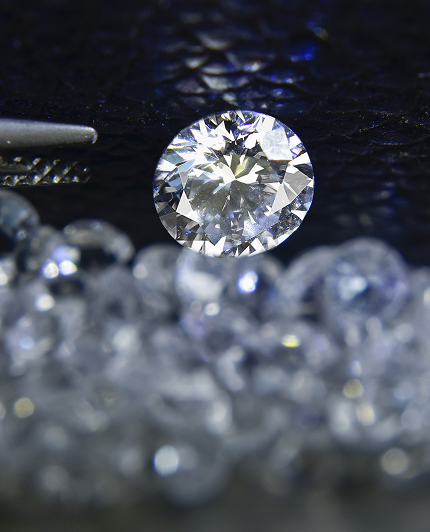Over the past decade, lab grown diamond rings have gone from niche alternatives to mainstream staples in the fine jewelry market. With modern consumers seeking ethical, sustainable, and budget-friendly options, the popularity of diamonds created in a lab — especially through CVD (Chemical Vapor Deposition) methods — has skyrocketed.
In this article, we delve into how CVD diamond manufacturers are reshaping the industry and why more buyers are choosing lab grown diamond rings over their mined counterparts.
What Are Lab Grown Diamonds?
Lab grown diamonds, also known as synthetic or man-made diamonds, are chemically, physically, and optically identical to natural diamonds. The only difference? Their origin.
Instead of forming over billions of years deep beneath the Earth’s crust, lab grown diamonds are created in a controlled laboratory environment using one of two processes:
- High Pressure High Temperature (HPHT)
- Chemical Vapor Deposition (CVD)
Of these, CVD technology is increasingly favored due to its efficiency, lower energy consumption, and ability to produce high-purity diamonds suitable for fine jewelry.
CVD Diamond Manufacturers: Powering the New Diamond Era
CVD diamond manufacturers play a crucial role in supplying high-quality stones for everything from engagement rings to high-fashion collections. With rising demand, several manufacturers have emerged across the globe, especially in India, the USA, and China.
Key Advantages of CVD Diamonds:
- Purity: CVD diamonds often have fewer inclusions and defects, resulting in better clarity.
- Customizability: Manufacturers can tailor size, color, and quality to match specific design needs.
- Sustainability: Compared to mining, CVD diamond production uses significantly less water and energy and causes minimal environmental disruption.
- Cost Efficiency: On average, lab grown diamonds are 30–40% cheaper than natural ones of similar quality.
India, particularly cities like Surat and Mumbai, has become a global hub for CVD diamond manufacturers. In fact, according to the Gem and Jewellery Export Promotion Council (GJEPC), India exported over $1.8 billion worth of lab grown diamonds in 2023, a significant leap from the previous year.
Why Lab Grown Diamond Rings Are Winning Hearts
Millennials and Gen Z are leading the shift toward lab grown diamond rings, driven by values such as sustainability, transparency, and individuality. A 2022 MVEye consumer research study revealed that 70% of Millennials and 80% of Gen Z prefer buying lab grown diamonds due to ethical reasons.
Let’s explore why lab grown rings are seeing such strong growth:
1. Ethical and Conflict-Free
Traditional diamond mining has long been linked to environmental destruction and conflict zones. Lab grown alternatives offer a guilt-free sparkle, with no human rights violations or ecological harm attached.
2. Budget-Friendly Brilliance
With savings of up to 40%, couples can afford larger, better-quality stones for the same budget — or even design custom pieces that would otherwise be out of reach.
3. Customization and Innovation
From colored diamonds to unique cuts, lab grown diamond rings offer creative freedom. Jewelers can offer one-of-a-kind designs that appeal to modern, design-savvy buyers.
How CVD Technology Enhances Diamond Quality
The CVD process begins with a diamond seed placed inside a sealed chamber filled with carbon-rich gases. Under controlled conditions, carbon atoms begin to deposit onto the seed, crystallizing into a diamond over weeks.
This slow, layered growth allows CVD diamond manufacturers to produce stones with:
- Excellent clarity (VVS to FL)
- Minimal nitrogen impurities, leading to Type IIa diamonds (the rarest and purest type)
- Greater control over carat weight and size
As a result, lab grown diamond rings featuring CVD diamonds often boast stunning brilliance, rivaling — and even exceeding — natural stones.
Real Market Growth: Facts and Figures
- The global lab grown diamond market is projected to reach $55.6 billion by 2031, growing at a CAGR of 9.4% from 2022 to 2031 (Allied Market Research).
- As of 2024, nearly 1 in 3 engagement rings sold in the U.S. features a lab grown diamond.
- Major jewelry retailers like Pandora, Signet Jewelers, and Blue Nile now carry extensive lab grown collections.
This data underscores the monumental impact CVD diamond manufacturers are having on global diamond supply and consumer trends.
How to Choose the Right Lab Grown Diamond Ring
When shopping for lab grown diamond rings, here are a few tips to keep in mind:
- Check the Certification
Always opt for diamonds certified by trusted institutions like IGI (International Gemological Institute) or GIA (Gemological Institute of America). - Understand the 4Cs
The same grading criteria — Cut, Color, Clarity, Carat — apply to lab grown diamonds. Review each factor carefully. - Ask About the Growth Process
Confirm whether the diamond is CVD or HPHT. As discussed, CVD diamonds tend to offer higher purity and less strain. - Review the Return and Warranty Policies
Reputable jewelers offer warranties and hassle-free returns to ensure buyer confidence.
Top CVD Diamond Producing Regions
- India – Surat alone accounts for a significant portion of the global lab-grown diamond polishing and production industry. Leading manufacturers export to the U.S., Europe, and the Middle East.
- USA – Companies like Diamond Foundry have made headlines for producing eco-certified diamonds in American labs.
- China – With large-scale production facilities, China is a major player in both HPHT and CVD segments.
Conclusion
The future of the diamond industry is being shaped in laboratories, not mines. As technology advances and consumer values evolve, lab grown diamond rings — especially those made by CVD diamond manufacturers — are carving out a permanent place in modern jewelry.
Whether you’re a jeweler, a wholesaler, or a conscious consumer, embracing lab grown diamonds isn’t just a trend — it’s a smart, ethical, and beautiful choice for the next generation.










